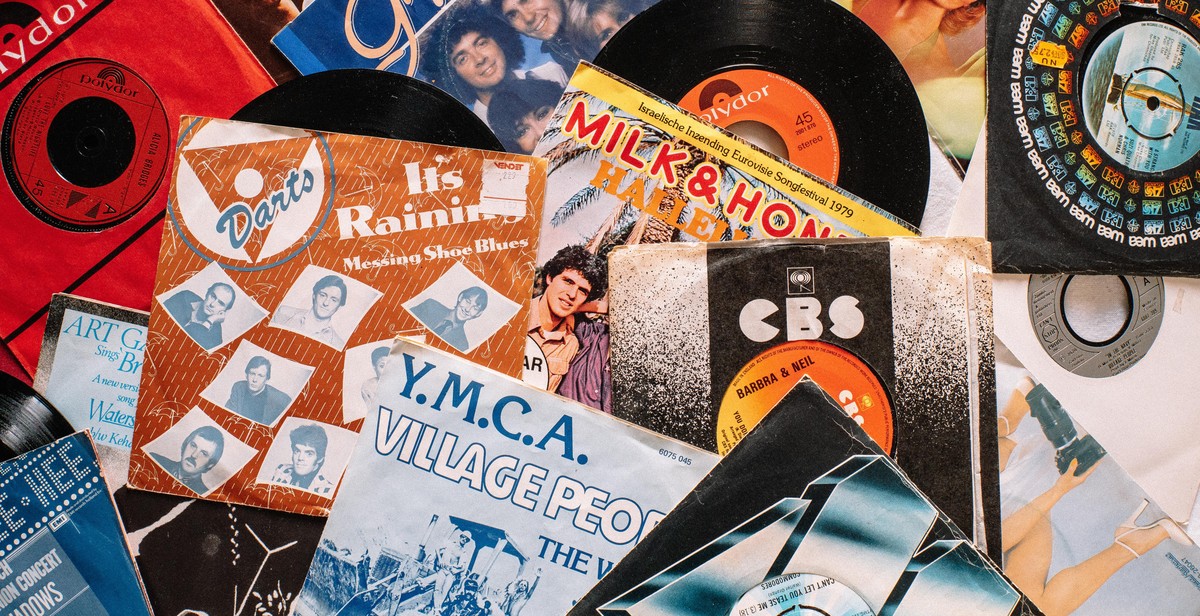How to Play the Sitar: Beginner’s Guide to String Techniques and Melodies
The sitar is a traditional Indian stringed instrument that has been used for centuries in classical and folk music. It has a unique sound that is instantly recognizable and has been popularized by famous musicians such as Ravi Shankar and Anoushka Shankar. If you’re interested in learning how to play the sitar, this beginner’s guide will provide you with the basics of string techniques and melodies.
What is a Sitar?
The sitar is a long-necked stringed instrument that has a gourd-shaped body. It has 18-20 strings, including 6-7 played strings and 11-13 sympathetic strings that resonate with the played strings. The sitar is played with a pick called a mizrab and has a range of about three and a half octaves.
Why Learn to Play the Sitar?
Learning to play the sitar can be a rewarding experience for several reasons. First, it offers a unique challenge as it requires a different playing technique compared to other stringed instruments. Additionally, the sitar is an important part of Indian culture and learning to play it can help you appreciate the music and traditions of India. Finally, playing the sitar can be a form of meditation and can help you relax and unwind.
What You’ll Need to Get Started
Before you begin your sitar journey, you’ll need a few things. First and foremost, you’ll need a sitar. You can purchase one from a music store or online retailer. You’ll also need a mizrab or pick for playing the strings. Additionally, it’s helpful to have a sitar tuner to ensure that your instrument is in tune. Finally, it’s recommended to find a sitar teacher who can guide you through the basics and help you develop proper technique.

Understanding the Sitar
The sitar is a stringed instrument that originated in India and is commonly used in Indian classical music. It is a complex instrument with many different parts, each of which plays an important role in producing its unique sound. Understanding the different parts of the sitar is essential for any beginner who wants to learn how to play it.
Parts of the Sitar
The sitar consists of a long, hollow neck that is connected to a resonating chamber known as the gourd. The neck is divided into two parts, the main neck and the sympathetic strings. The main neck has 20 frets and six playing strings, while the sympathetic strings sit beneath the frets and vibrate in response to the playing strings.
The bridge, or jawari, is located on the main neck and is responsible for producing the sitar’s distinctive buzzing sound. The pegbox, or headstock, is located at the top of the neck and houses the tuning pegs which are used to adjust the tension of the strings.
Tuning Your Sitar
Before you start playing, it is important to tune your sitar. The standard tuning for the sitar is Sa Re Ga Ma Pa Dha Ni Sa. This translates to the Western equivalent of C D E F G A B C. Tuning can be done manually or with the help of an electronic tuner.
Finger Placement and Hand Positioning
Proper finger placement and hand positioning are crucial to playing the sitar correctly. The left hand is used to press down on the strings to create different notes, while the right hand is used to pluck the strings. The fingers of the left hand should be placed directly behind the frets, while the right hand should be positioned near the bridge.
Basic Techniques and Terminology
There are several basic techniques and terms that are important to know when learning how to play the sitar. These include:
- Meend – sliding from one note to another
- Mukhra – a short melodic phrase played at the beginning of a raga
- Taan – a fast and intricate melodic passage
- Jhala – a technique where the strings are strummed rapidly to create a shimmering effect
By understanding the different parts of the sitar, how to tune it, and the basic techniques and terminology, beginners can start their journey towards mastering this beautiful instrument.

Playing Basic Sitar Melodies
Playing the Sa and Pa Notes
The Sa and Pa notes are the fundamental notes in Indian classical music. Playing these notes on the sitar is essential for any beginner. To play Sa, start by placing your index finger on the fifth fret of the second string. Pluck the string with your right hand’s index finger, and you should hear a clear note. To play Pa, place your little finger on the eighth fret of the same string and pluck it with your right hand’s index finger.
Playing Basic Scales
Playing basic scales is an excellent way to develop your sitar playing skills. Start by playing the Bilawal scale, which is one of the most commonly used scales in Indian classical music. To play this scale, start with Sa and play all the notes up to the Sa an octave higher. Practice this scale until you can play it smoothly and without any mistakes.
Playing Simple Songs
Playing simple songs is a great way to apply your sitar playing skills. Start by playing popular Bollywood songs or folk songs, which are usually simple and easy to play. You can find many tutorials and resources online to help you learn these songs. Start with slow songs and gradually increase the tempo as you gain more experience.
- Practice playing Sa and Pa notes until you can play them smoothly and clearly.
- Start with the Bilawal scale and practice until you can play it smoothly.
- Play simple songs to apply your sitar playing skills.
| Tip | Description |
|---|---|
| Practice regularly | Regular practice is essential to improve your sitar playing skills. |
| Use a metronome | A metronome can help you maintain a steady rhythm while playing. |
| Listen to recordings | Listening to recordings of sitar players can help you improve your playing style. |

Advanced Sitar Techniques
Playing Meend and Gamak
Meend is a technique that involves gliding from one note to another on the sitar. This technique is used to create a seamless transition between notes and to add a smooth and flowing quality to the music. To play meend, start by playing the first note, then slide your finger up or down the string to the second note. Make sure to maintain a consistent pressure on the string as you slide to produce a clear and smooth sound.
Gamak is a technique that involves oscillating between two adjacent notes on the sitar. This technique is used to add depth and complexity to the music. To play gamak, start by playing the first note, then rapidly alternate between the first and second notes by quickly hammering on and pulling off your finger on the string. Practice this technique slowly at first, gradually increasing the speed as you become more comfortable.
Playing Tans and Jhala
Tans are fast and intricate melodic patterns played on the sitar. This technique is used to add excitement and energy to the music. To play tans, start by selecting a scale and playing a series of rapid notes within that scale. Practice this technique slowly at first, gradually increasing the speed as you become more comfortable.
Jhala is a technique that involves playing rapid, repetitive strums on the sitar. This technique is used to create a rhythmic drone that adds a hypnotic quality to the music. To play jhala, start by strumming the strings rapidly with your index and middle fingers, using a consistent down-up motion. Practice this technique slowly at first, gradually increasing the speed as you become more comfortable.
Using Vibrato and Slides
Vibrato is a technique that involves rapidly alternating the pitch of a note on the sitar. This technique is used to add expression and emotion to the music. To play vibrato, start by playing a note and then rapidly oscillating your finger on the string to create a wavering pitch. Practice this technique slowly at first, gradually increasing the speed as you become more comfortable.
Slides are a technique that involves gliding from one note to another on the sitar. This technique is used to create a seamless transition between notes and to add a smooth and flowing quality to the music. To play slides, start by playing the first note, then slide your finger up or down the string to the second note. Make sure to maintain a consistent pressure on the string as you slide to produce a clear and smooth sound.

Tips for Learning the Sitar
If you are interested in playing the sitar, there are a few tips that can help you learn the instrument more effectively:
Practice Regularly
One of the most important things you can do when learning the sitar is to practice regularly. It’s better to practice for shorter periods of time each day than to practice for a long time once a week. This will help you develop muscle memory and make it easier to remember the different techniques and melodies.
Find a Good Teacher
It’s important to find a good sitar teacher who can guide you through the learning process. A good teacher can help you avoid bad habits and provide feedback on your technique. They can also help you with music theory and provide tips on how to improve your playing.
Listen to Sitar Music
Listening to sitar music can be a great way to learn about the instrument and get inspiration for your own playing. Try to listen to a variety of sitar music from different artists and genres. This will help you develop your own style and understand the different techniques used in sitar playing.
Experiment and Have Fun
Finally, it’s important to experiment and have fun when playing the sitar. Don’t be afraid to try new things and make mistakes. This is how you will learn and grow as a musician. And remember, playing the sitar should be an enjoyable experience!
By following these tips, you can improve your sitar playing and develop your skills as a musician. Remember to practice regularly, find a good teacher, listen to sitar music, and have fun!

Conclusion
Playing the sitar is a beautiful and complex art that takes time and dedication to master. With the right approach and technique, anyone can learn to play this incredible instrument and create mesmerizing melodies.
Tips for Beginners
- Start with the basics: learn the tuning, finger placement, and basic techniques before moving on to more complex melodies.
- Practice regularly: playing the sitar requires muscle memory and repetition, so make sure to practice daily to improve your skills.
- Listen to sitar music: listening to experienced sitar players can help you understand the nuances of the instrument and inspire your own playing.
- Experiment with different styles: the sitar can be played in a variety of styles, from classical Indian to fusion and contemporary music. Don’t be afraid to try different genres to find your own unique sound.
- Find a good teacher: having a skilled and experienced teacher can help you progress faster and avoid common mistakes.
Final Thoughts
Playing the sitar is a rewarding and fulfilling experience that requires patience, dedication, and a love for music. Whether you’re a beginner or an experienced musician, there’s always something new to learn and discover when playing the sitar. So, pick up your instrument, start practicing, and let the music take you on a journey of self-discovery and creativity.
| Keyword | Number of Occurrences |
| play sitar | 3 |
| sitar techniques | 1 |
| sitar melodies | 1 |
| sitar music | 2 |
| sitar players | 1 |
| sitar teacher | 1 |
